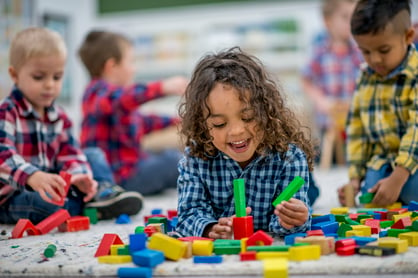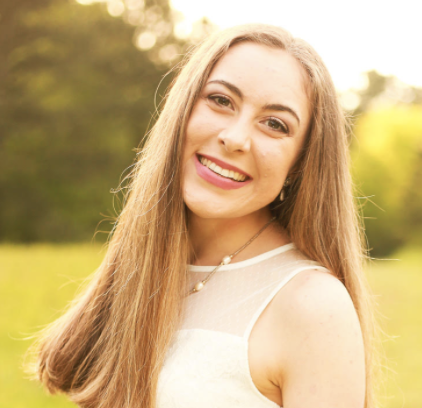Supporting Play in Early Childhood: Specific Strategies for Autistic Children
Without a doubt, play is an essential foundation for a child’s development, especially throughout the early elementary years. Engaging in fun, enjoyable, and imaginary play is often a natural part of life for typically developing children; however, for autistic children, the acquisition of group play and social skills may not occur in a typical fashion.1 Nevertheless, play is an important consideration when assessing the developmental milestones of autistic children. Treatment plans should be implemented to help each child meet their full potential and individualized goals for success.
The Importance of Play in a Child’s Development
Play typically leads to improved cognitive flexibility--along with the acquisition of sharing, turn-taking, imagination, and appropriate social interaction skills. It is considered a core component of a child’s development. In addition to its physical, relational, and conversational benefits, play also fosters:
-
Sharing the same focus on a physical object through pointing, gesturing, or coordinating glances (e.g., pointing to--and gazing at--an airplane with a caregiver, teacher, or therapist as it flies by). Joint attention and nonverbal communication skills:
Joint attention and nonverbal communication skills:
-
Social-emotional reciprocity:
Engaging in social situations with two or more people (e.g., developing sharing skills, taking turns with peers, and compromising, especially in the late childhood and elementary school years).
-
Parallel play:
Interacting alongside--but not necessarily together with--other children (e.g., playing with Legos next to a peer).
-
Early imitation skills:
Copying the actions of others (e.g., playing “Follow the Leader,” “Simon Says,” or fostering imitation through action-based songs like “Pat-A-Cake Pat-A-Cake”).
-
Physical endurance, fine and gross motor skills, and mental well-being:
Enriching the connection between the mind, body, and spirit through play.
-
Achievement of new competencies and self-advocacy skills:
Attaining personal goals, bolstering self-confidence, and overcoming present challenges by learning to ask for help when needed. -
Personality development, language acquisition, and emotional growth:
Improving cognition, relational skills, vocabulary repertoire, and social interaction abilities across multiple contexts. -
Leadership skills and navigating group situations:
Enhancing the capacity to cooperate with others, resolve conflicts, and complete daily living tasks.
-
Self-discovery, decision-making, and impulse control benefits:
Stimulating brain development through group play, identifying personal interests and passions, and promoting perspective-taking skills, imaginary play, and emotional regulation further down the road.
While there are countless social, emotional, and cognitive advantages, play certainly provides an unmatched opportunity for children to explore their environment, expand their personal interests, and develop early independence skills.2 Play also allows young children to demonstrate their physical competencies and face their fears as they gain a more complete understanding of (and fascination with) the world around them.
Characteristics of Group Play in Autistic Children
While play is a critical aspect of child development, autistic children may struggle to acquire appropriate social interaction and group play skills due to a variety of factors, including interfering behaviors, social communication deficits, and literal (rather than abstract) patterns of thinking. Autistic children often prefer to play alone and may not copy, model, or imitate the actions of others like typically developing children. A lack of social awareness, inability to appropriately express emotion, and limited reciprocity (i.e., impaired back-and-forth communication with others) can contribute to difficulty with group play as well.
Many autistic individuals also exhibit special interests, unusual behaviors, and inflexible patterns of thinking, making play with peers more challenging. Some common attributes that cause autistic children to struggle during group play include:
- A desire to engage in the same action repetitively, coupled with a propensity to become hyper-fixated on certain aspects of a game, activity, or toy (e.g., pushing the button on a favorite red truck over and over because it is soothing)3
- An avoidance of games and activities that require abstract thinking or active group participation
- A fascination with lining toys up in a row
- Sensory differences, lack of imaginary play skills, and literal (i.e., concrete) thought processes
 Difficulty with social-emotional reciprocity (i.e., back-and-forth interactions with others) and identifying nonverbal cues, such as body language and the preferences and intentions of others 4
Difficulty with social-emotional reciprocity (i.e., back-and-forth interactions with others) and identifying nonverbal cues, such as body language and the preferences and intentions of others 4
- A preference to play alone (e.g., refraining from interacting directly with peers)
- Limited eye contact, verbal communication skills, and joint attention (i.e., sharing the same focus on an object with another person)
- Poor hand-eye coordination, restricted interests, and delayed fine/gross motor skills (e.g., unsteady gait, trouble maintaining balance and proper posture, a rigid fascination with certain games, activities, or toys, and difficulty with walking, sitting, writing, or grasping small objects)
Because typically developing peers may not understand the thinking patterns, unusual behaviors, or fixed interests of autistic individuals, these characteristics can contribute to autistic children being excluded from social activities with their peers. As a result, this may cause the gap to widen for neurodiverse children in the context of group play, especially if not addressed adequately, directly, and in a timely manner by a knowledgeable caregiver, teacher, or professional.
Specific Interventions for Improving Play Skills in Autistic Children
Neurodiverse children may lack appropriate imitation, group collaboration, and perspective-taking skills, leading to difficulty with interpreting nonverbal cues (such as the facial expressions, body language, or intentions of others). Furthermore, since many autistic children prefer to play by themselves, they may resort to parallel play (i.e., playing next to--but not together with--their peers) and demonstrate a distinct fascination with sameness.
In any case, individualized treatment plans must fill these gaps by decreasing behavioral challenges and promoting positive, prosocial skills that encourage achievement in the area(s) posing a challenge for the child. Improving one’s imagination, sharing, rule-following, and turn-taking behavior can aid in the development of appropriate reciprocal conversation and group play skills.
Specific interventions that include play as a treatment modality for autistic children include:
-
Integrated Play Groups (IPG):
A strategy developed by Pamela Wolfberg that promotes inclusive play and group engagement among children with diverse learning and developmental backgrounds. -
FloorTime:
An intervention developed by Stanley Greenspan that emphasizes relationships with others to foster communication, group interaction, prosocial behavior, and cognitive enrichment.
These approaches were specifically designed to increase developmentally beneficial play for autistic learners. By encouraging neurodiverse individuals to connect with, engage appropriately, and respond to their peers, social skills can be enhanced from an early age. 
Those with learning differences should also be encouraged to develop perspective-taking, emotional control, symbolic play, and self-awareness skills. A strategy that successfully combines each of these skills is the Zones of Regulation approach developed by Leah Kuypers, an occupational therapist (OT) and educator in the field of autism instruction and special education. Her strategy uses the principles of behavior change and cognitive behavior therapy (CBT) to teach autistic children how to properly identify, respond to, and regulate their emotions--thereby increasing their group collaboration, self-monitoring, and social interaction skills in the process. Kuypers believes that autistic children come to better understand the thoughts, feelings, and perspectives of themselves and others through the development of improved self-regulation and perspective-taking skills.
Two additional approaches that are effective for increasing social connectedness and group play among neurodiverse children are:
-
Relationship development intervention (RDI):
A model that works with a child’s caregiver(s) to implement behavioral strategies that improve areas of deficit in the context of social interaction and group play.
- Natural environment training (NET) - a subset of applied behavior analysis (ABA) treatment that encourages individual learning with naturally existing reinforcers in a child’s environment.
Capitalizing on the motivation of those with learning differences is a powerful way to reduce behavioral deficits while enhancing prosocial play skills. Autistic children should also be guided to build their reciprocal communication skills through modeling, scripting, copying (i.e., imitating), and role-playing with peers.
Overview of the Top Four Interventions for Play
Integrated Play Groups (IPG), FloorTime, relationship development intervention (RDI), and natural environment training (NET) are several powerful interventions for supporting autistic children in developing play skills. Each model uses different strategies and techniques to promote meaningful improvements in the areas of social interaction, peer collaboration, and group play skills.
Wolfberg’s IPG model, for example, seeks to maximize each child’s potential to socialize with others in a reciprocal, inviting, and structured environment while encouraging the development of shared conversation skills and integrated play among learners of various ability types, cultural backgrounds, and ages in the process.
Greenspan’s FloorTime approach highlights the significance of following a child’s lead and bringing each child into a shared experience with caregivers, peers, and professionals who support the development of critical thinking, individualized growth, and imaginary play skills. FloorTime is also an effective strategy for reducing repetitive behaviors among autistic children because caregivers can redirect the child to another aspect of the toy, game, or activity.
Relationship development intervention (RDI) centers around the concept that relationships play a key role in a child’s ability to appropriately engage with others, and the model is based on family-initiated treatment. Two primary goals of RDI are caregiver-guided participation and improved cognition for the child.
Natural environment training (NET) implements behavioral strategies to capitalize on a child’s innate motivation within the context of naturally occurring contingencies (i.e., play environments). The benefits of NET include that it focuses directly on the personal interests, motivations, and passions of the child to strengthen socialization, communication, and group participation skills. It is also easy to implement.
By improving the imagination, sharing, perspective-taking, and emotional regulation skills of autistic children, any future challenges a child may face can be proactively mitigated. Regardless of the underlying cause, it is increasingly important to address group play skills--or the lack thereof--in the context of a child’s development. This sets the child up for a successful, goal-driven, and meaningful life in the long run.

What are some strategies you have found helpful for improving play in autistic children?
References
- https://www.iidc.indiana.edu/irca/articles/play-time-an-examination-of-play-intervention-strategies-for-children-with-autism-spectrum-disorders.html
- https://pediatrics.aappublications.org/content/119/1/182
- https://www.verywellhealth.com/autistic-child-form-of-play-259884
- https://www.continued.com/early-childhood-education/ask-the-experts/what-is-social-emotional-reciprocity-22969

Kenna McEvoy
Kenna has a background working with children on the autism spectrum and enjoys supporting, encouraging, and motivating others to reach their full potential. She holds a bachelor's degree with graduate-level coursework in applied behavior analysis and autism spectrum disorders. During her experience as a direct therapist for children on the autism spectrum, she developed a passion for advocating for the health and well-being of those she serves in the areas of behavior change, parenting, education, and medical/mental health.




